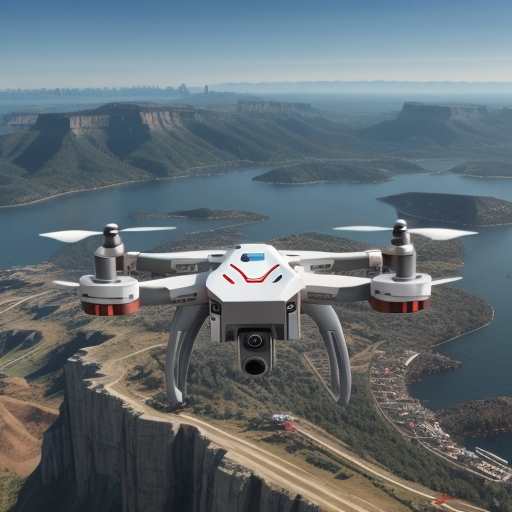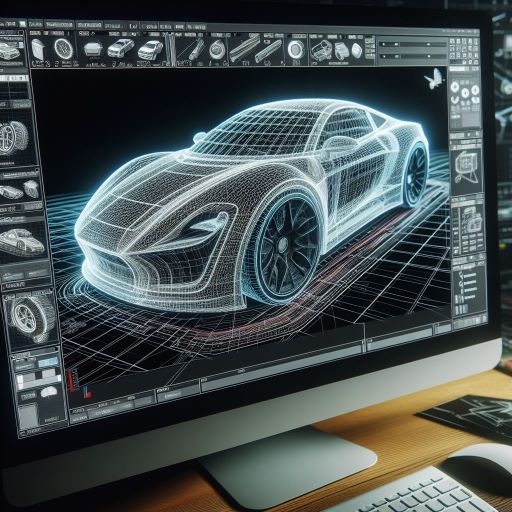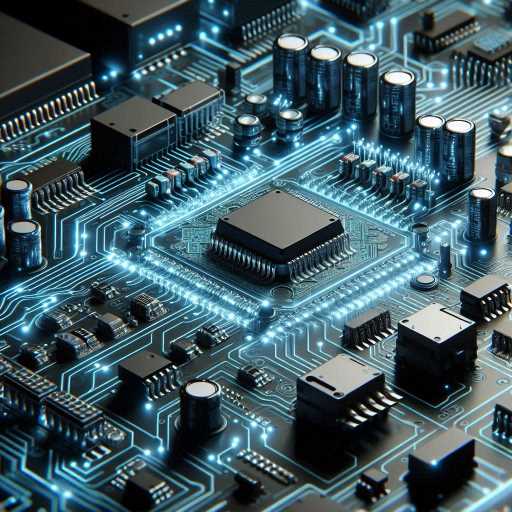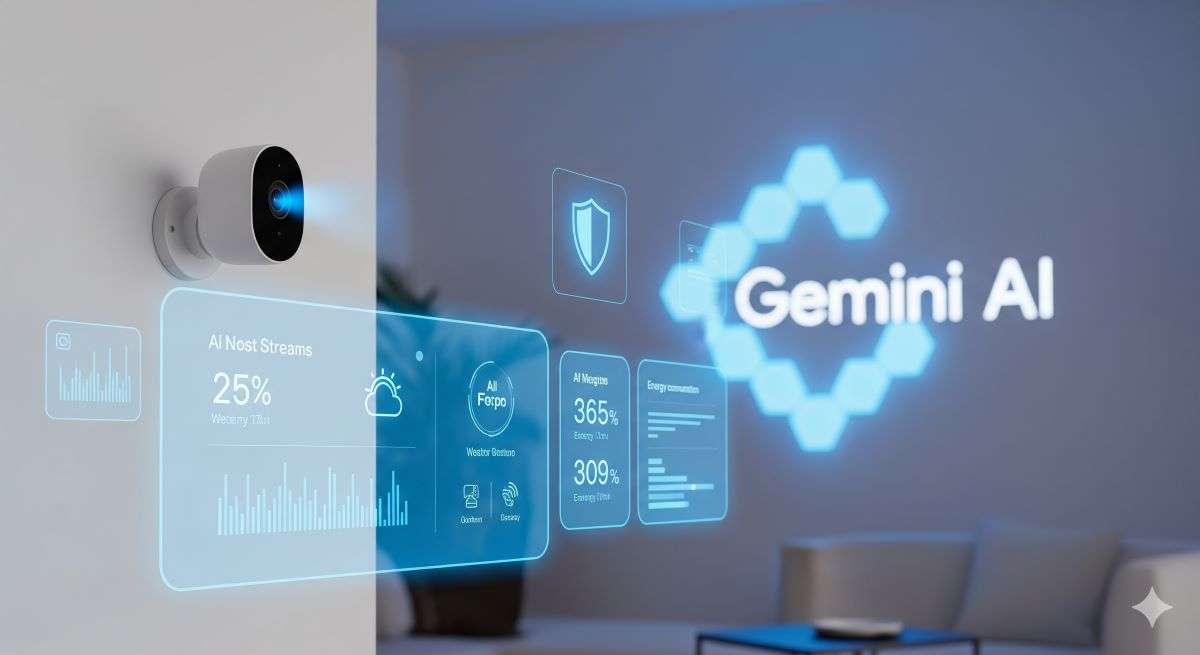Artificial Intelligence (AI) has grown into a powerful force across industries, and its integration into electronics is particularly transformative. From smart devices and autonomous systems to predictive maintenance and real-time decision-making, AI’s influence is reshaping how we interact with technology. This post delves into the convergence of AI electronics, exploring its applications, challenges, benefits, and future prospects.
Table of Contents

Introduction to AI in Electronics
At its core, electronics is about creating devices that process, manipulate, and transmit electrical signals to perform specific tasks. Traditionally, electronic devices have operated based on predefined logic circuits and algorithms. While efficient, these systems lack adaptability and cannot make decisions without human intervention.
AI introduces a dynamic layer of intelligence to electronics. Unlike traditional systems, AI enables electronic devices to learn from data, recognize patterns, and make decisions autonomously. This shift means that devices can evolve, improve their functionality, and react to changes in their environment without being explicitly programmed to do so.
Historical Context: Electronics Before AI
Before AI entered the scene, the development of electronics was driven by advances in semiconductor technology, integrated circuits (ICs), and hardware design. Devices followed fixed rules, and their functionality was determined by hardwired logic or pre-programmed instructions. Complex systems such as microprocessors allowed for sophisticated tasks like data processing and communications, but they lacked the ability to “think” or adapt to new situations.
In industries such as telecommunications, aerospace, and consumer electronics, efficiency depended on precision in circuit design, power management, and signal processing. Although electronics was continuously evolving, the limitations of predefined logic restricted how far automation could go.
The Evolution of AI Electronics
The integration of AI into electronics became feasible due to advancements in machine learning (ML), deep learning, and neural networks, along with increasing computational power and data availability. AI technologies, such as natural language processing (NLP), computer vision, and reinforcement learning, have paved the way for more sophisticated systems that can perceive their environment, process data, and make real-time decisions.
The growth of the Internet of Things (IoT) played a pivotal role in accelerating AI adoption. IoT devices generated vast amounts of data, creating a need for intelligent systems to process and act on this information. AI-based algorithms empowered electronic devices to process data on the edge (locally on devices) or in the cloud, thus reducing latency and improving the speed of response.

Key Applications of AI Electronics
AI has been applied to various fields within electronics, from consumer electronics to industrial applications. Some of the key areas where AI is making an impact include:
1. Smart Devices and Wearables
AI plays a crucial role in enhancing the capabilities of smart devices, such as smartphones, watches, and home assistants. Features like voice recognition, facial recognition, predictive text, and image processing are driven by AI algorithms. Wearable devices like smartwatches use AI to track health metrics, analyze data, and provide personalized health recommendations.
For example, AI-powered health wearables can monitor vital signs, detect irregularities, and alert users or medical professionals in case of emergencies. These devices can learn a user’s behavior over time and adapt their functionality based on individual preferences and health patterns.
2. Autonomous Vehicles and Drones
AI is at the core of autonomous vehicles (AVs) and drones. These systems use sensors like cameras, lidar, radar, and ultrasonic sensors to collect data about the environment. AI algorithms process this data in real-time, enabling vehicles to navigate through complex terrains, recognize objects, avoid obstacles, and make decisions with minimal human intervention.
In automotive electronics, AI is used to power advanced driver assistance systems (ADAS), which provide features like lane-keeping, adaptive cruise control, and automated parking. AI is also integral to fully autonomous driving systems, where it must handle complex situations, such as detecting pedestrians and responding to traffic signals.
3. Smart Home Automation
AI-driven electronics are revolutionizing home automation systems. From intelligent lighting and climate control to security systems, AI-powered devices can learn user habits, optimize energy usage, and enhance security. For instance, AI-based security cameras can recognize faces, detect unusual activities, and alert homeowners in real-time.
AI assistants like Amazon Alexa, Google Assistant, and Apple Siri provide centralized control over various home appliances, learning from users’ commands and routines. These systems can anticipate needs, such as adjusting the thermostat or turning off lights, based on user behavior patterns.
4. Healthcare Devices
In healthcare, AI-powered electronic devices are transforming diagnostics, treatment, and patient monitoring. For instance, AI algorithms in medical imaging devices help doctors analyze scans with higher precision, detecting abnormalities such as tumors or fractures that might be missed by human eyes. Wearable devices and biosensors equipped with AI can monitor patients’ health in real-time, allowing for early detection of potential health issues.
Smart prosthetics and robotic surgery tools also use AI to provide greater precision, adaptability, and control. AI-enabled devices help improve the quality of life for patients by assisting in rehabilitation, monitoring chronic conditions, and offering personalized treatment options.
5. Predictive Maintenance in Industrial Electronics
Predictive maintenance, powered by AI, is a game-changer in industrial electronics. Factories and plants rely on complex machinery that requires regular maintenance to prevent costly breakdowns. AI-driven systems can monitor machinery in real-time, analyzing sensor data to predict when components are likely to fail. This allows for proactive repairs, reducing downtime and improving operational efficiency.
For example, AI-based solutions in electronics can detect anomalies in voltage, current, or temperature, which may indicate a looming failure. By using AI, industries can optimize maintenance schedules and avoid unnecessary expenses.
6. Consumer Electronics and Entertainment
AI plays a major role in modern entertainment systems, from smart TVs to gaming consoles. AI algorithms are used to personalize content recommendations on streaming platforms, predict user preferences, and enhance audio-visual experiences. In gaming, AI-driven systems provide immersive experiences, allowing for more adaptive gameplay and realistic virtual environments.
AI is also transforming audio devices, with technologies like noise cancellation, voice enhancement, and spatial audio processing making it possible for users to enjoy clearer, richer sound experiences.

Impact of AI on Electronic Circuit Design and Manufacturing
The integration of AI is not only reshaping how electronic devices operate but also how they are designed and manufactured. AI-driven tools are increasingly used in the design process to optimize circuits, predict performance, and streamline development workflows.
1. Circuit Design Automation
Traditionally, designing complex integrated circuits (ICs) involved manual work by engineers to define the layout and functionality of each component. AI is changing this by automating the design process through electronic design automation (EDA) tools. These tools use machine learning algorithms to optimize the placement of components, reduce power consumption, and enhance performance.
AI-based tools also enable designers to simulate circuits under various conditions, reducing the need for physical prototyping and testing. This speeds up the time-to-market for new electronic products while ensuring greater reliability and performance.
2. Defect Detection and Quality Control
AI-powered computer vision systems are increasingly used in electronics manufacturing to detect defects in printed circuit boards (PCBs) and other components. By analyzing high-resolution images, AI algorithms can spot imperfections such as misaligned components, soldering defects, or micro-cracks that may lead to product failure.
With AI-enhanced quality control systems, manufacturers can maintain higher standards of precision and efficiency. Automated inspection processes also reduce human error and enable faster detection of issues during production.
3. Supply Chain Optimization
In the electronics industry, supply chain management is a complex and critical process. AI is being used to optimize supply chains by analyzing large amounts of data from various sources, including suppliers, transportation systems, and market demand. AI-driven systems can predict disruptions, optimize inventory management, and reduce lead times, leading to more efficient manufacturing and distribution.
Challenges and Limitations of AI in Electronics
While the integration of AI into electronics offers numerous benefits, it also poses certain challenges:
1. Data Privacy and Security
AI-driven electronic devices collect vast amounts of data, including personal and sensitive information. This raises concerns about data privacy and security. Ensuring that data is securely stored and processed is critical, particularly in devices like smart home assistants, healthcare devices, and autonomous vehicles.
AI systems are also vulnerable to cyberattacks, where malicious actors can exploit vulnerabilities in the software to gain unauthorized access or manipulate system behavior. Building robust security measures into AI-powered electronics is essential to mitigate these risks.
2. Power Consumption
AI algorithms, especially those used in deep learning and neural networks, require significant computational resources. This can lead to increased power consumption, which is a major concern for portable and battery-powered electronic devices. As AI becomes more pervasive in electronics, there is a growing need for energy-efficient algorithms and hardware architectures.
3. Ethical Considerations
The rise of AI in electronics also raises ethical questions, particularly in areas like surveillance, autonomous decision-making, and job displacement. For instance, AI-powered surveillance systems can potentially infringe on personal privacy, while autonomous systems may face moral dilemmas when making life-or-death decisions (e.g., in autonomous vehicles).
Additionally, AI-driven automation could lead to job displacement in certain sectors, as machines replace tasks previously performed by humans. Balancing the benefits of AI with ethical considerations is crucial to ensuring that its deployment aligns with societal values.
The Future of AI in Electronics
The future of AI in electronics is full of possibilities, as advancements in both AI and hardware continue to accelerate. Some of the key trends and developments to look forward to include:
Neuromorphic Computing
Neuromorphic computing is a field that mimics the human brain’s neural architecture to create energy-efficient AI systems. By designing chips that can process data in a brain-like manner, neuromorphic computing has the potential to significantly reduce the power consumption of AI-driven devices
if you like this content click here for more –> Read New





